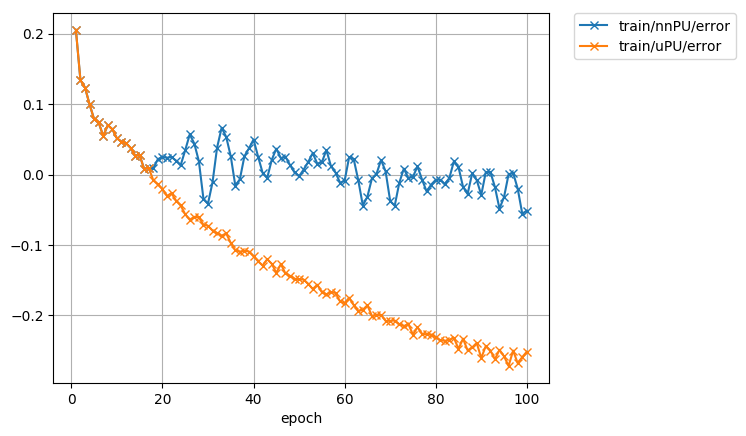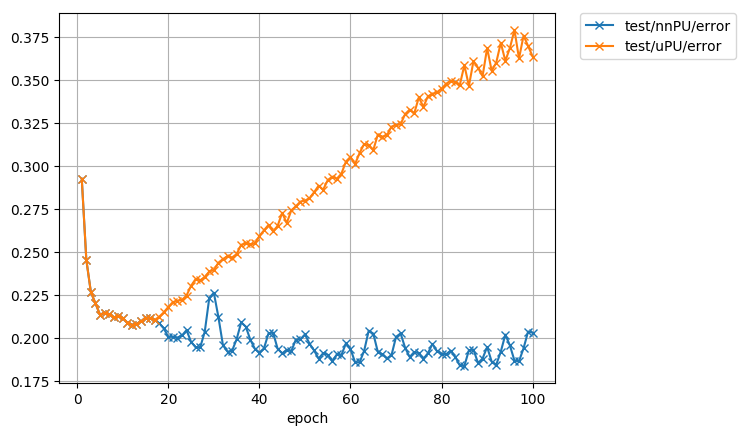kiryor / Nnpulearning
Programming Languages
Projects that are alternatives of or similar to Nnpulearning
Chainer implementation of non-negative PU learning and unbiased PU learning
This is a reproducing code for non-negative PU learning [1] and unbiased PU learning [2] in the paper "Positive-Unlabeled Learning with Non-Negative Risk Estimator".
-
pu_loss.pyhas a chainer implementation of the risk estimator for non-negative PU (nnPU) learning and unbiased PU (uPU) learning. -
train.pyis an example code of nnPU learning and uPU learning. Dataset are MNIST [3] preprocessed in such a way that even digits form the P class and odd digits form the N class and CIFAR10 [4] preprocessed in such a way that artifacts form the P class and living things form the N class. The default setting is 100 P data and 59900 U data of MNIST, and the class prior is the ratio of P class data in U data.
Requirements
- Python == 3.7
- Numpy == 1.16
- Chainer == 6.4
- Scikit-learn == 0.21
- Matplotlib == 3.0
Quick start
You can run an example code of MNIST for comparing the performance of nnPU learning and uPU learning on GPU.
python3 train.py -g 0
There are also preset configurations for reproducing results on [1].
-
--preset figure1: The setting of Figure 1 -
--preset exp-mnist: The setting of MNIST experiment in Experiment -
--preset exp-cifar: The setting of CIFAR10 experiment in Experiment
You can see additional information by adding --help.
Example result
After running training_mnist.py, 2 figures and 1 log file are made in result/ by default.
The errors are measured by zero-one loss.
- Training error in
result/training_error.png
- Test error in
result/test_error.png
Reference
[1] Ryuichi Kiryo, Gang Niu, Marthinus Christoffel du Plessis, and Masashi Sugiyama. "Positive-Unlabeled Learning with Non-Negative Risk Estimator." Advances in neural information processing systems. 2017.
[2] Marthinus Christoffel du Plessis, Gang Niu, and Masashi Sugiyama. "Convex formulation for learning from positive and unlabeled data." Proceedings of The 32nd International Conference on Machine Learning. 2015.
[3] LeCun, Yann. "The MNIST database of handwritten digits." http://yann.lecun.com/exdb/mnist/ (1998).
[4] Krizhevsky, Alex, and Geoffrey Hinton. "Learning multiple layers of features from tiny images." (2009).


